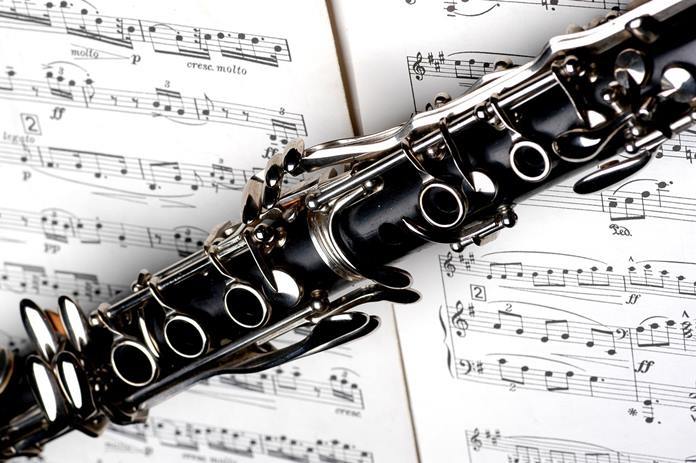
“To what?” I suppose you could justifiably enquire. The expression is old jazz slang for a clarinet because of course, clarinets are usually black. I’ve sometimes heard orchestral players use the term but only when they’re joking, drunk or both. When I was a music student in London, I used to share a flat with a clarinetist. Unlike me, he was an extremely diligent student and practised his clarinet for hours every day. When he wasn’t practising he was sorting out reeds with which he seemed obsessed. He used to buy Vandoren clarinet reeds in Paris, returning with several boxes which would then be carefully sorted and graded. This was followed by more hours of practising. All this endless labour paid off because he eventually became a world-class professional musician.
Although the clarinet has a permanent place in the modern orchestra, it wasn’t always thus. And it wasn’t always black, either. The instrument first appeared during the early years of the eighteenth century and it was a clever development of a simple reed instrument called the chalumeau (SHA-loo-moh). The word is still used today to describe the low register of the clarinet. It looked a bit like a wooden tenor recorder to which someone had stuck a few brass levers here and there. By the late eighteenth century more keywork had been added to make the instrument capable of playing more technically demanding music. Usually made of boxwood, these early clarinets were light brown and didn’t acquire the licorice colour (and the complex modern mechanism) until many years later.
The “standard” clarinet is actually part of a much larger family of clarinets some of which are now so rare that they’re encountered only in museums. Nowadays, you can sometimes spot the small E flat clarinet and the bass clarinet in orchestras. The enormous contrabass clarinet rarely makes an appearance. It’s an odd-looking contraption and looks more like a science-fiction military weapon that a musical instrument.
Johann Stamitz was one of the most prolific and important composers of the mid-eighteenth century. He wrote nearly sixty symphonies and invented, if that’s the right word, the four-movement symphony which remained a standard format for years to come. In the early 1740s he was appointed as Musical Director to the Elector Palatine whose court was at Mannheim. Stamitz was in charge of the court orchestra and he developed various orchestral techniques (including the rapid ascending figure known as the Mannheim Rocket) and brought the well-disciplined orchestra considerable fame. It was once described by Dr Charles Burney as “an army of generals”. Years later, Mozart heard this orchestra and was especially impressed by the clarinets.
It was once thought that this work of 1755 was the first clarinet concerto ever but modern research has shown this is not the case. The Stamitz concerto is played here on a modern instrument and it’s typical of the court music of the period, exhibiting the much-valued classical ideals of dignity, poise and elegant melodies; qualities from which Mozart would later take inspiration.
Few composers have the gift of writing music that sounds truly American but Copland is one of them. You can almost sense the vision of a vast prairie with distant hills; a pastoral landscape bathed in radiant early-morning sunshine. Copland started the work in 1947 and scored it for strings, piano and harp. It was commissioned by jazz clarinetist Benny Goodman who evidently paid two thousand dollars for the work, a considerable sum in those days. There are just two movements, linked by a cadenza – a standard part of most concertos and usually intended to display the soloist’s technical skills. The first movement is slow and expressive, full of what’s been described as Copland’s “bitter-sweet lyricism”. The cadenza introduces some of the Latin-American and jazz themes that dominate the lively second movement.
This is one of the best recordings around: not only a brilliant soloist but an incredibly good chamber ensemble. Just listen to the sparkling and virtuosic coda section from 14:15 onwards and the thrilling glissando on the last chord! As a teenager, I used to have a treasured LP of this work featuring Benny Goodman himself. But the playing was urbane and over-polite, as though Goodman was attempting to shake off his jazz persona and sound like a “classical” musician. This stunning Norwegian performance is much more exuberant and leaves the old Goodman recording rather in the shadows. Sorry, Benny.
 |
 |
 |





